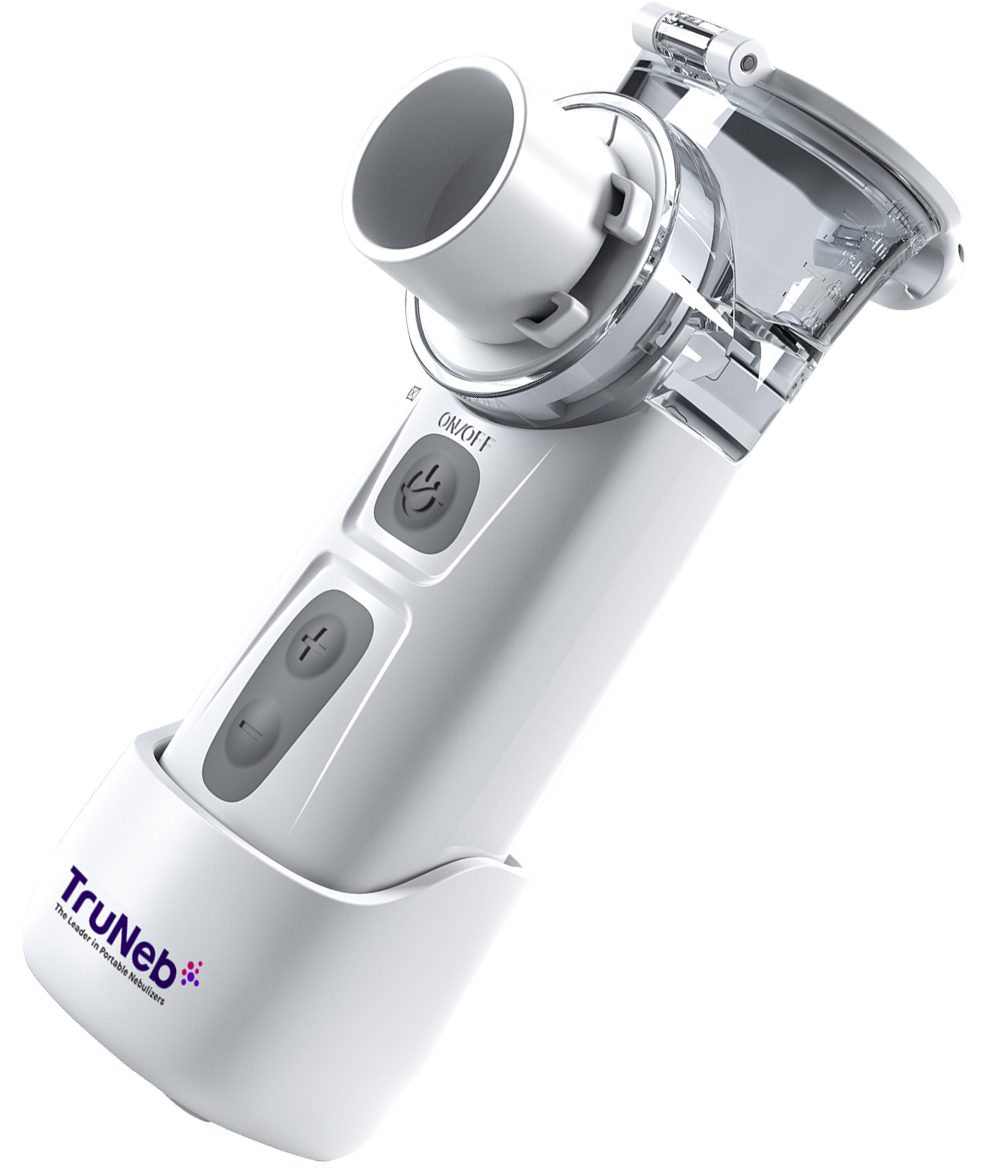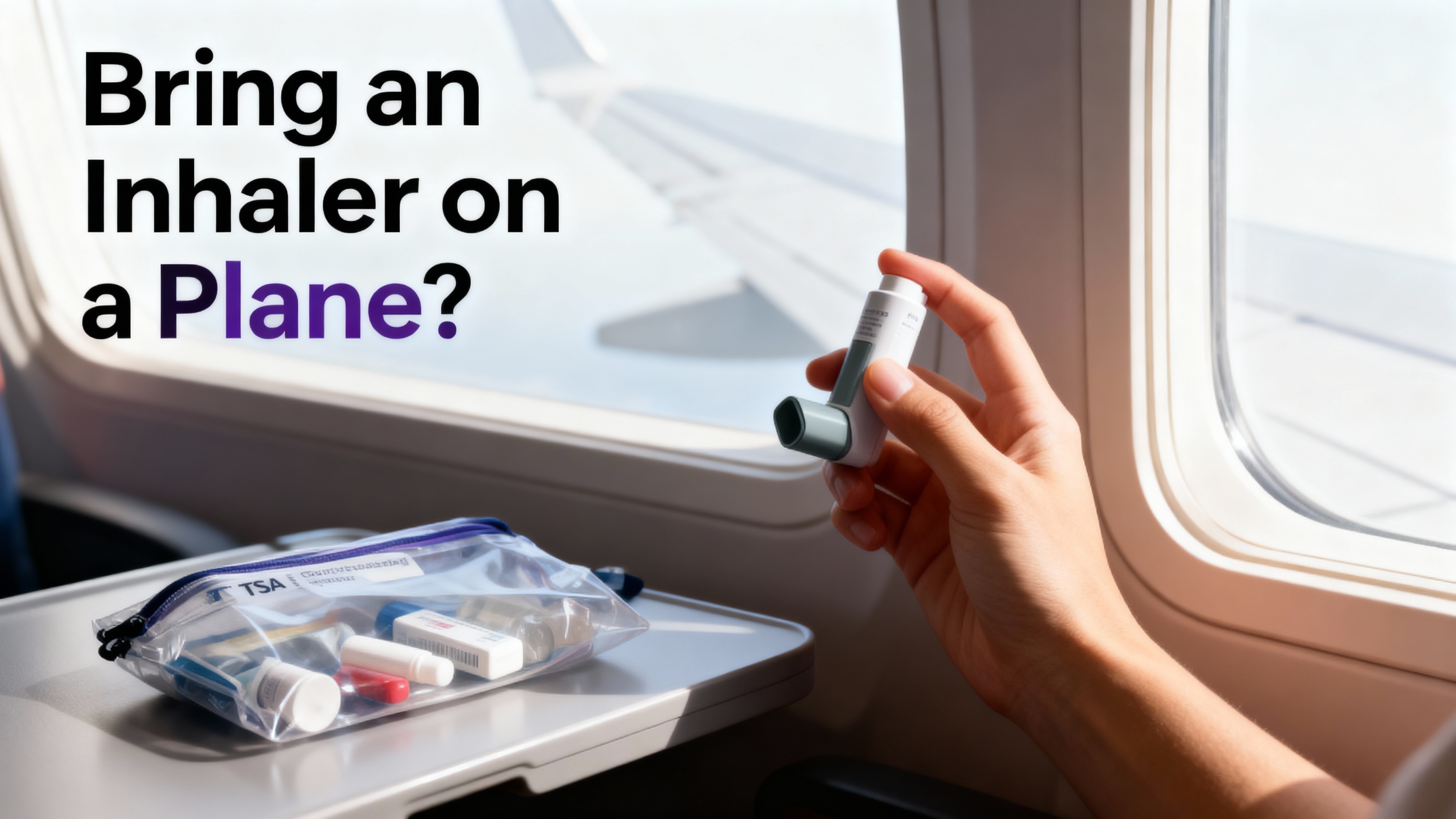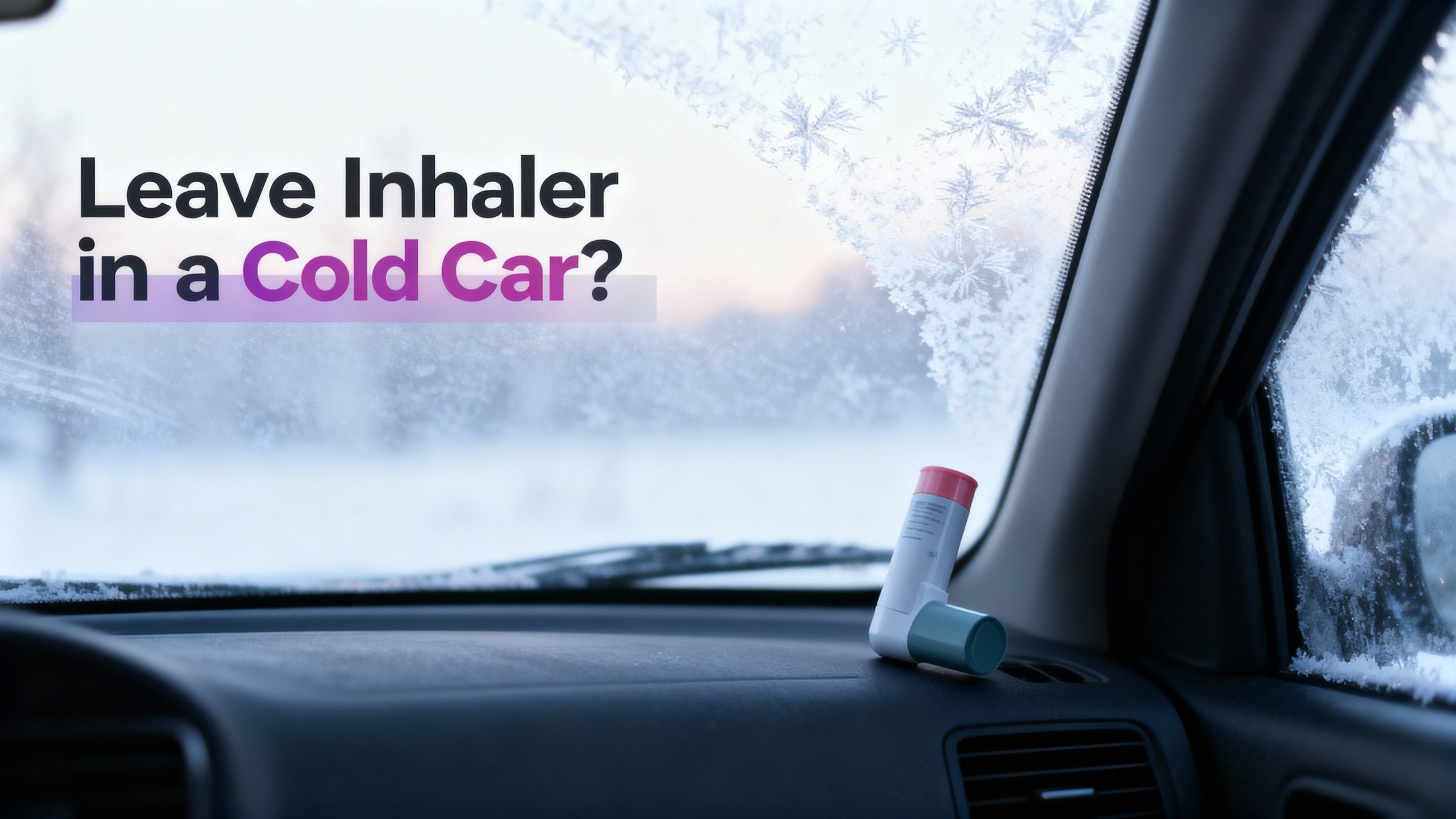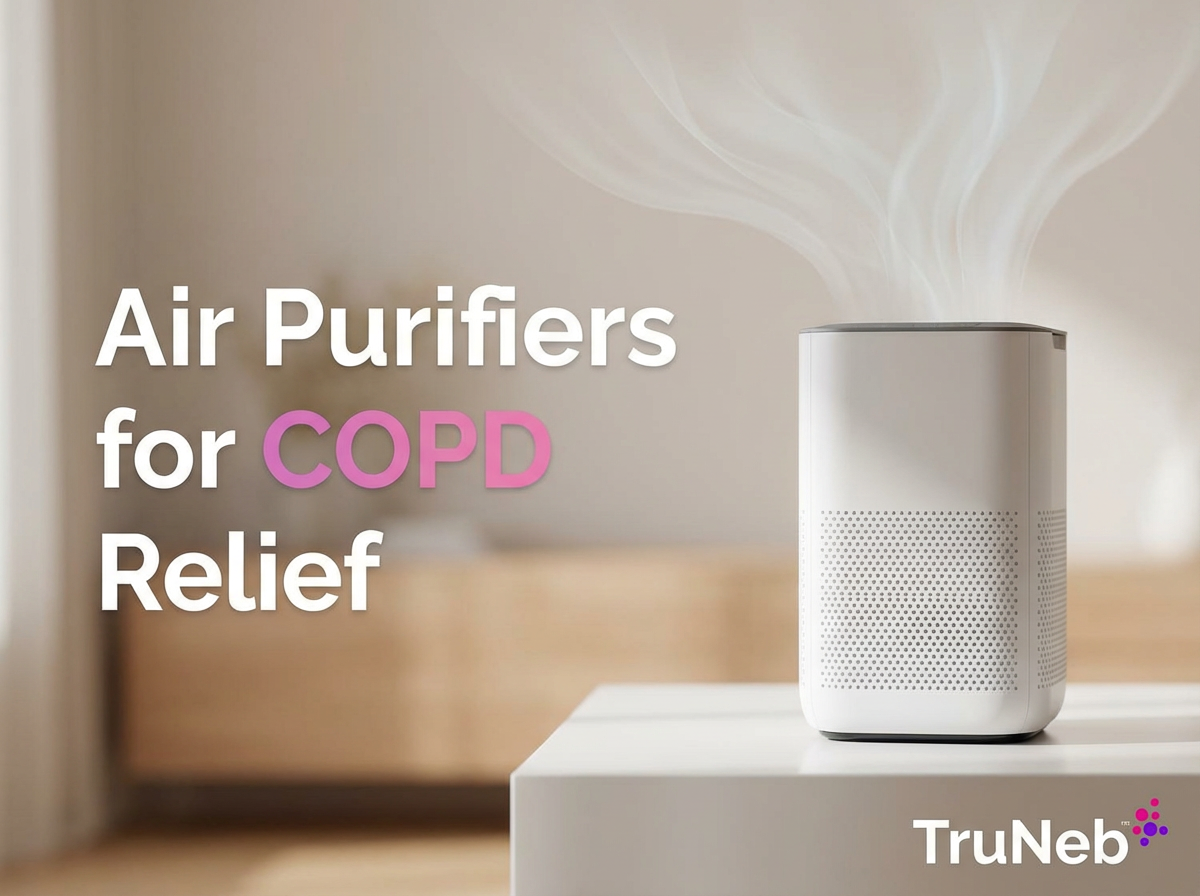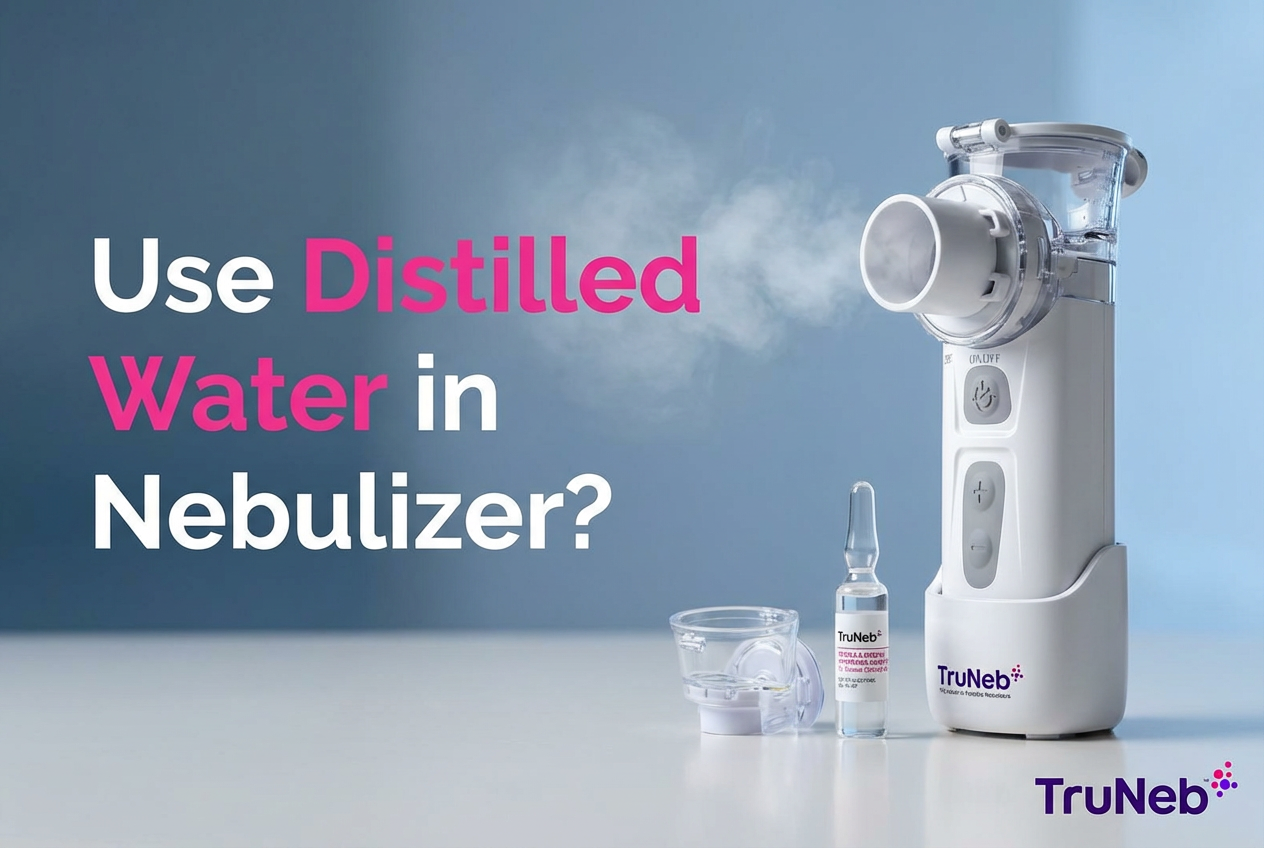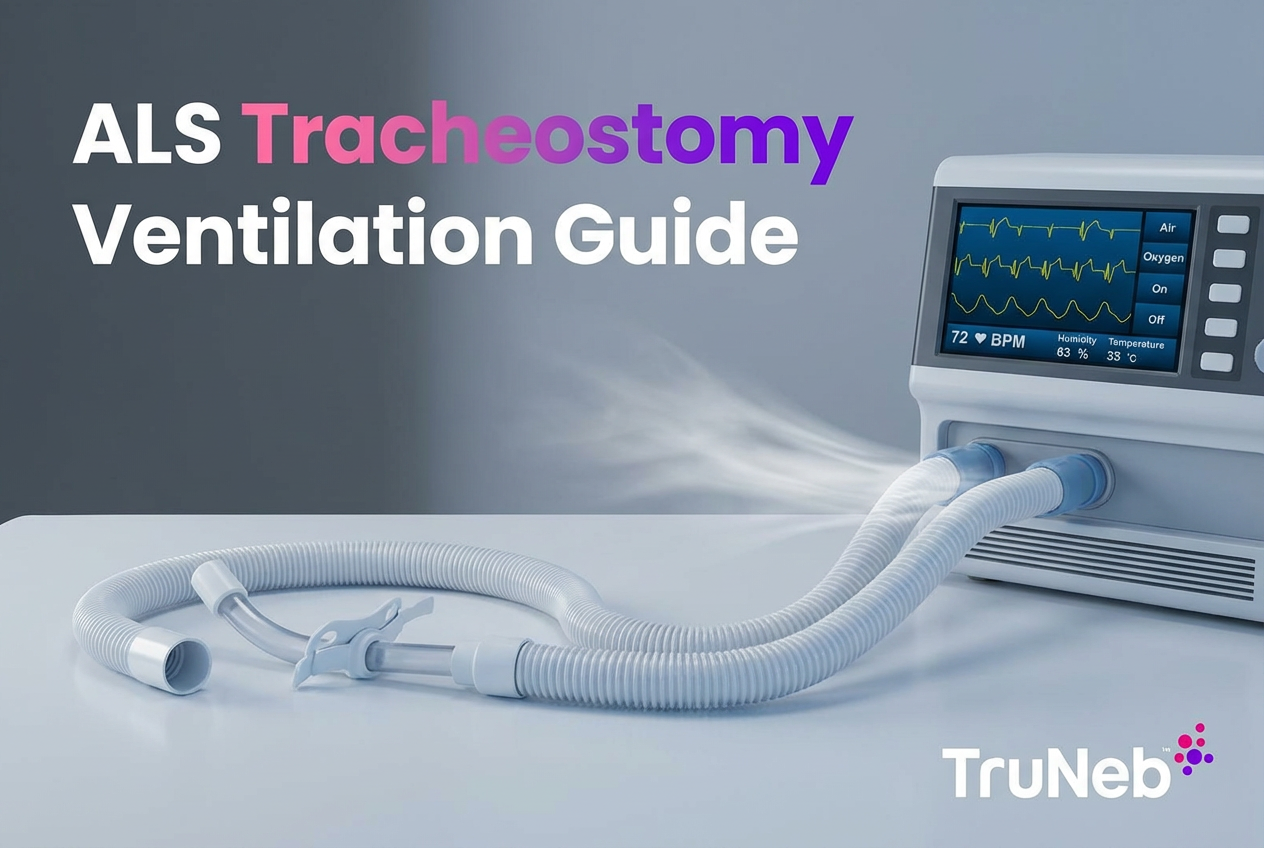On this page
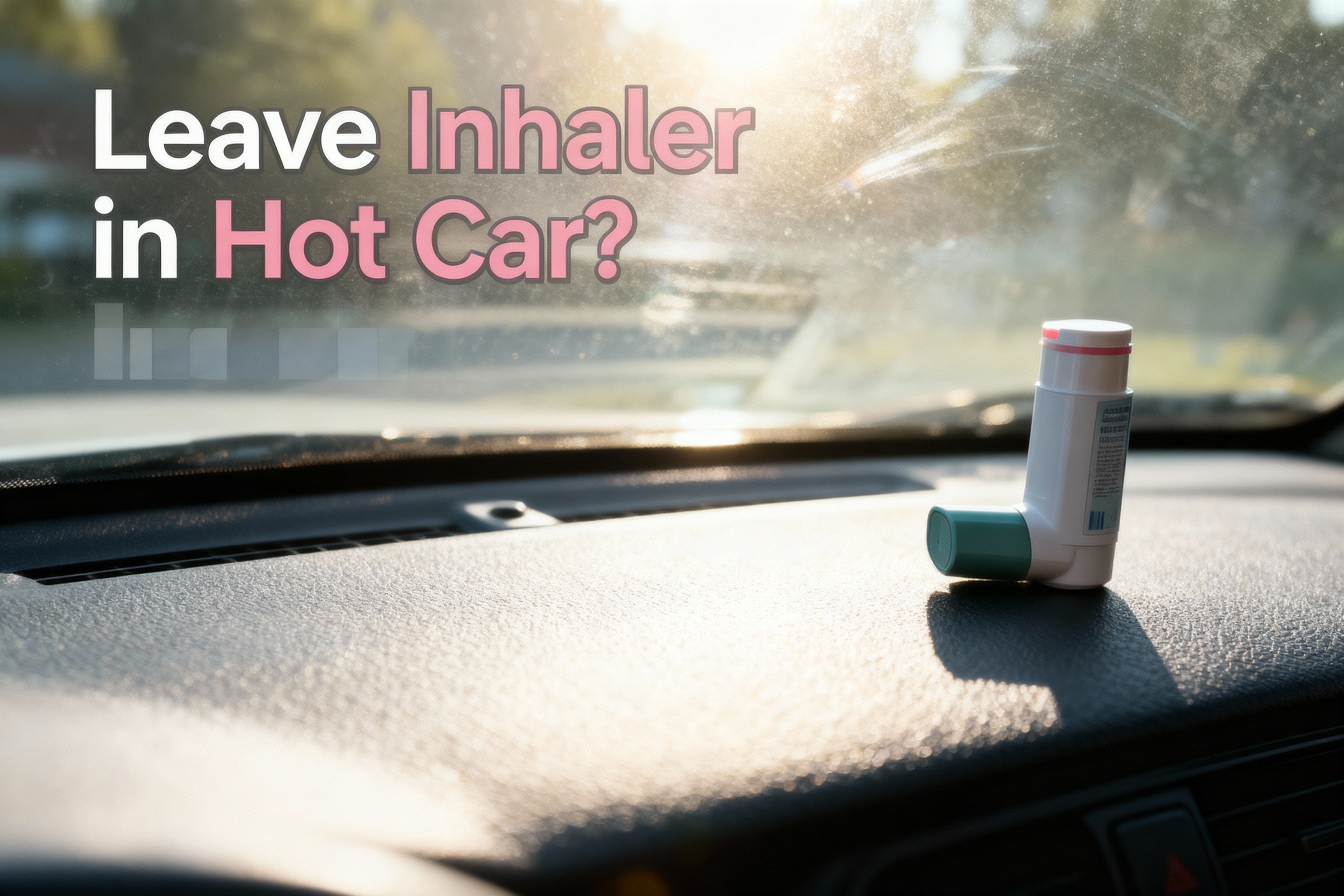
No. A hot car can make your inhaler less effective and, for pressurized inhalers, even dangerous. Car interiors can reach 140–160°F (60–71°C) on sunny days. Pressurized inhalers carry a label warning: around 120°F (49°C), the canister can burst. This includes common rescue inhalers like albuterol.
Quick rule: keep inhalers at room temperature and out of cars.
How High Temperatures Affect Your Asthma Inhaler
Heat harms both the medicine and the device.
- Medication potency can drop at high temps. That means each puff can deliver less relief than it should.
- In metered‑dose inhalers (MDIs), the propellant inside the metal canister expands with heat. Above about 120°F (49°C), labels warn the can can burst.
- Plastic parts and seals can warp or leak, letting medicine or propellant escape.
Albuterol rescue inhalers are especially critical to keep at safe temperatures so each puff delivers the expected relief.
Labels expect storage near 68–77°F (20–25°C); parked cars can hit 140–160°F (60–71°C), and MDIs can burst around 120°F (49°C).
High heat weakens your dose and can stress a pressurized canister enough to burst around 120°F (49°C).
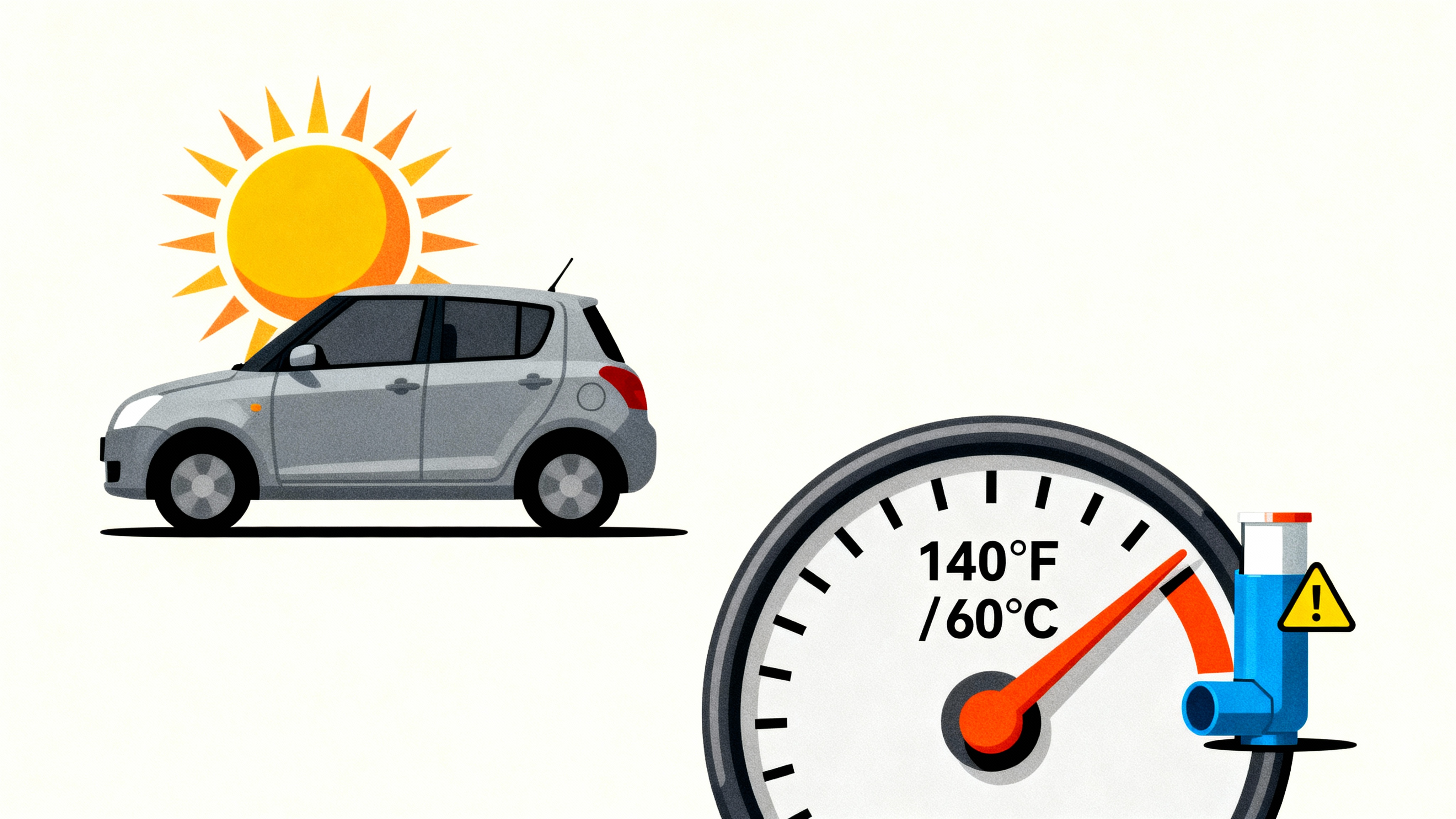
Optimal Storage Temperature for Inhalers
- Store at room temperature: about 68–77°F (20–25°C).
- Some labels allow brief excursions up to 86°F (30°C), but avoid sustained heat.
- Do not freeze.
- Keep out of direct sunlight, car interiors, and places that get hot or steamy.
Room temperature means indoors, climate‑controlled, and away from direct sun.
Store inhalers at 68–77°F (20–25°C), avoid freezing, and keep them out of cars and direct sun.
Do Different Inhaler Types Handle Heat Differently?
| Inhaler type | Propellant? | Main heat risks | Notes |
|---|---|---|---|
| Metered‑Dose Inhaler (MDI) | Yes (HFA) | Canister pressure rises; can burst around 120°F (49°C)[1]; dose delivery can change | Never leave in hot cars or direct sun |
| Dry Powder Inhaler (DPI) | No | Powder potency can drop; humidity can clump powder; plastic parts can warp | Avoid heat and moisture |
| Soft Mist Inhaler (SMI) | No (spring‑driven) | Liquid medicine can degrade; device parts can deform in heat | Keep within room‑temp range |
[1] Based on manufacturer warnings for pressurized canisters; parked cars can exceed 140–160°F (60–71°C) on sunny days.
Pressurized Metered-Dose Inhalers (MDIs)
MDIs contain HFA propellant in a metal canister. In high heat, pressure rises and the canister can burst near 120°F (49°C); output can change before that.
Dry Powder Inhalers (DPIs)
DPIs don’t use propellant, but heat and humidity can degrade or clump the powder and warp plastic parts. They still need cool, dry storage.
Soft Mist Inhalers (SMIs, e.g., Respimat)
SMIs use a spring to aerosolize liquid medicine, which can degrade in heat; keep them within room‑temperature range.
All types work best at room temperature; none are heat‑proof.
MDIs risk bursting in heat, while DPIs and SMIs won’t explode but their medicine and parts can still be damaged.
Signs Your Inhaler Was Damaged by Heat
- Weak or no spray: The puff seems faint, sputters, or stops.
- Odd taste or smell: The mist tastes different or smells off.
- Warped or leaking parts: Warped plastic, residue around the nozzle, or hissing.
- Counter dropped fast: Dose counter fell without heavy use, hinting at a leak.
- Poor relief: Your usual dose doesn’t help like it should.
Some heat damage isn’t visible, so err on the side of replacing an overheated inhaler.
If the spray is weak, the taste is off, parts look warped, or relief drops, replace the inhaler.
What to Do If You Left Your Inhaler in a Hot Car
⚠️ If you have severe trouble breathing, blue or gray lips, or can’t speak in full sentences, call 911 or go to the emergency room.
- Assume it’s unreliable: Use only if you have no other option right now.
- Replace it as soon as possible: Call your pharmacy or doctor. Explain it overheated; they can often approve an emergency or early refill.
- Test spray if you must use it: Spray away from your face to check output, then seek a fresh inhaler.
- Dispose safely: Don’t incinerate or puncture pressurized canisters. Ask your pharmacy about take‑back options.
- Prevent next time: Keep a backup inhaler at home/work so you’re not tempted to leave one in the car.
Treat an overheated inhaler as unreliable and arrange a replacement as soon as possible.
Can an Inhaler Explode or Catch Fire?
- Pressurized MDIs can burst if heated above about 120°F (49°C). That’s why labels warn: "Contents under pressure. Do not expose to heat or flame."
- A burst is a sharp pop and can send pieces flying. It’s a pressure hazard, not a fuel‑like fireball. If a spark is present, propellant could ignite.
Pressurized inhalers can burst above about 120°F, and propellant can ignite if there’s a spark.
Don’t Leave Other Medications in Hot Cars Either
Heat can damage many medicines, from insulin to epinephrine and common pills. If a car can reach 140–160°F (60–71°C), that’s well beyond safe storage for most drugs. Keep all medications in climate‑controlled spaces and carry them with you instead of leaving them in a vehicle. Steam inhalers are not nebulizers and aren’t for prescription meds.
Most medicines lose effectiveness in high heat—carry them with you instead of leaving them in a vehicle.
Tips to Protect Your Inhaler in Summer
- Never leave it in a parked car. Take it with you, even for quick errands.
- Use an insulated pouch. A small cooler bag helps keep temps steady. Do not place directly on ice.
- Keep it shaded and close. A backpack or purse stays cooler than a dashboard.
- Avoid home hot spots. Skip windowsills, bathrooms, and spots near ovens or heaters.
- Travel smart. Keep inhalers in carry‑on bags, not in hot trunks.
- Have a backup. Store a spare at home or work so one is always safe.
If you use a portable mesh nebulizer, TruNeb™ is easy to carry and use on the go, but it still needs a cool, dry place. Steam inhalers are NOT for breathing medications.
Never leave inhalers in parked cars—use an insulated pouch and keep a backup stored indoors.
Frequently Asked Questions
Tap or click a question below to see the answer:
Not recommended—treat it as unreliable and arrange a replacement. Use it only if you have no alternative right now.
Room temperature is best (68–77°F/20–25°C). Sustained heat above the mid‑80s°F can reduce effectiveness. Around 120°F (49°C), a pressurized MDI canister can burst.
It’s possible if the car interior exceeds about 120°F (49°C). Many inhalers warn that high heat can cause the canister to burst, and parked cars often reach that temperature.
Use the overheated inhaler only if you must for immediate relief, then call your pharmacy or doctor for an emergency or early refill. Keep a backup stored indoors going forward.
Medical Disclaimer
This article is for informational purposes and isn’t a substitute for professional medical advice. Always talk with your doctor or pharmacist about your health and treatments.

